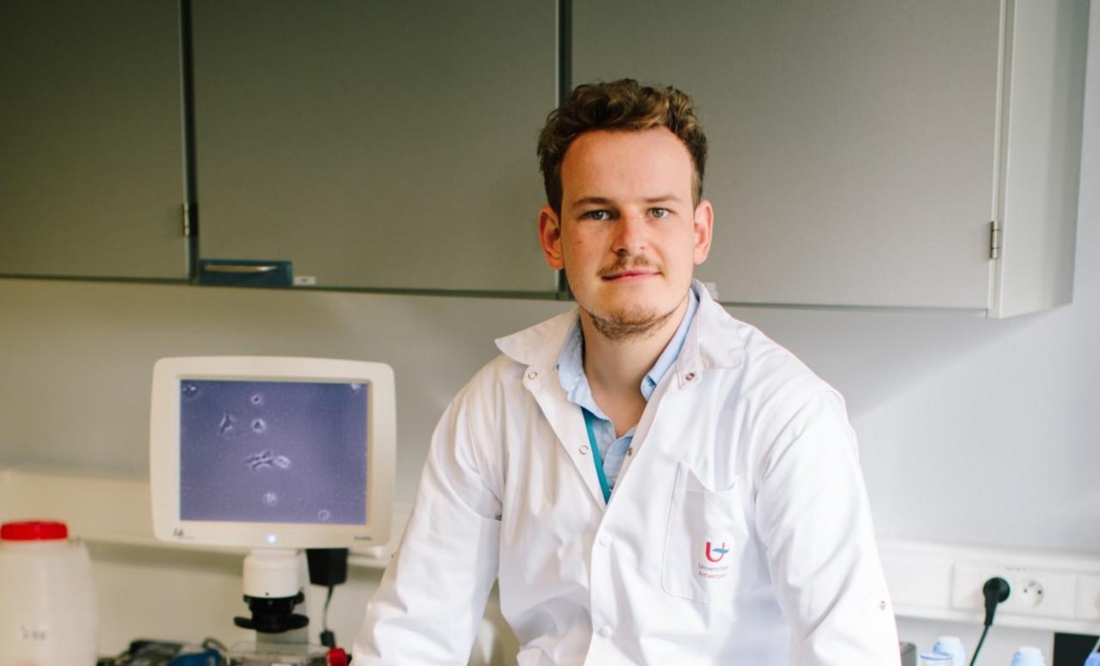Bert Van den Bogerd (28) was crowned the winner of the fifth edition of the Flemish PhD Cup on Tuesday evening. The eight finalists were each given three minutes in the Depot in Leuven to unveil their years of research. “It is unbelievable”, responded Van den Bogerd. In addition to the jury prize, Van den Bogerd also ran the audience prize.
–
Presenting four to six years of scientific research in a clear and concrete manner in just three minutes: it is not an easy task, but that is what was expected of the eight finalists of the Flemish PhD Cup. On Tuesday evening they competed against each other in the Depot in Leuven. Bert Van den Bogerd emerged as the winner with his research into corneal membranes. In this way, he was awarded a course worth 5,000 euros at the Vlerick Business School, and was also allowed to give a lecture at the University of Flanders. Nicolas Wijsen took second place, Eline Haspeslagh third.
From 30 September to the evening of the ceremony, the general public could also vote for his favorite researcher, and Bert Van den Bogerd also took the prize there. With the audience award he wins an article in the next issue of Eos Magazine.
For this fifth edition of the PhD Cup, 81 candidates registered, which is a record.
Replace cornea
Van den Bogerd’s research might save you from blind or low vision in your old age. He copies the cornea so that damaged membranes can be replaced.
“The cornea is the transparent tissue at the front of the eye, the window of the eye, so to speak,” Bert Van den Bogerd explained earlier. He did his PhD at the University of Antwerp with support from the Fund for Scientific Research (FWO). “That cornea can be damaged by certain diseases or by cataract surgery. In time it can make you visually impaired or blind. It is a problem that will occur more and more due to the aging population. ”
There are too few donors all over the world to replace the cornea. So it has to be counterfeited. “We can reproduce the inner part of the cornea in a simple way: we grow cells from a donor cornea and let them grow. In order to eventually transplant them, we still have to place them on a membrane. I developed those membranes together with colleagues from the University of Ghent. ”
“We made the membrane from a bioplastic and gelatin. This bioplastic is derived from starch, namely polylactic acid, and the small layer of gelatin comes from bovine bones. It is a fairly rigid membrane, which is an important criterion. But above all, it is the thinnest membrane developed for this application so far. It’s only a few micrometers thick, ten times thinner than a human hair. That’s important because the thinner it is, the more transparent it is. ”
Production is not very complicated, says Van den Bogerd. “Normally it is possible to produce it on a large scale,” he says. “But it still has to go through research steps. We can test it on rabbits within three to four years and, although it is difficult to predict, on humans in ten to fifteen years. ”
– .


